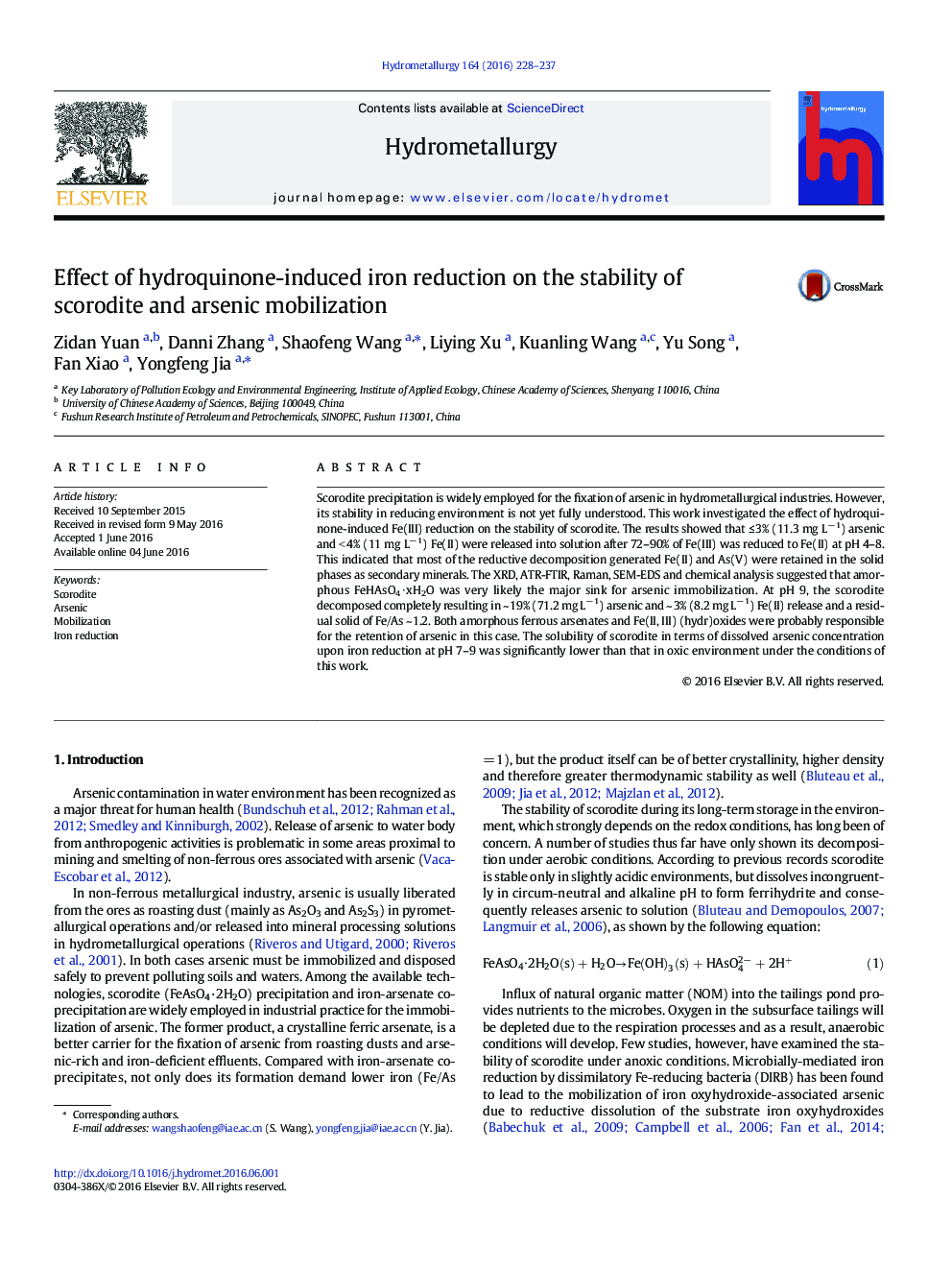| Article ID | Journal | Published Year | Pages | File Type |
|---|---|---|---|---|
| 6659197 | Hydrometallurgy | 2016 | 10 Pages |
Abstract
Scorodite precipitation is widely employed for the fixation of arsenic in hydrometallurgical industries. However, its stability in reducing environment is not yet fully understood. This work investigated the effect of hydroquinone-induced Fe(III) reduction on the stability of scorodite. The results showed that â¤Â 3% (11.3 mg Lâ 1) arsenic and < 4% (11 mg Lâ 1) Fe(II) were released into solution after 72-90% of Fe(III) was reduced to Fe(II) at pH 4-8. This indicated that most of the reductive decomposition generated Fe(II) and As(V) were retained in the solid phases as secondary minerals. The XRD, ATR-FTIR, Raman, SEM-EDS and chemical analysis suggested that amorphous FeHAsO4 â
 xH2O was very likely the major sink for arsenic immobilization. At pH 9, the scorodite decomposed completely resulting in ~ 19% (71.2 mg Lâ 1) arsenic and ~ 3% (8.2 mg Lâ 1) Fe(II) release and a residual solid of Fe/As ~ 1.2. Both amorphous ferrous arsenates and Fe(II, III) (hydr)oxides were probably responsible for the retention of arsenic in this case. The solubility of scorodite in terms of dissolved arsenic concentration upon iron reduction at pH 7-9 was significantly lower than that in oxic environment under the conditions of this work.
Related Topics
Physical Sciences and Engineering
Chemical Engineering
Chemical Engineering (General)
Authors
Zidan Yuan, Danni Zhang, Shaofeng Wang, Liying Xu, Kuanling Wang, Yu Song, Fan Xiao, Yongfeng Jia,
